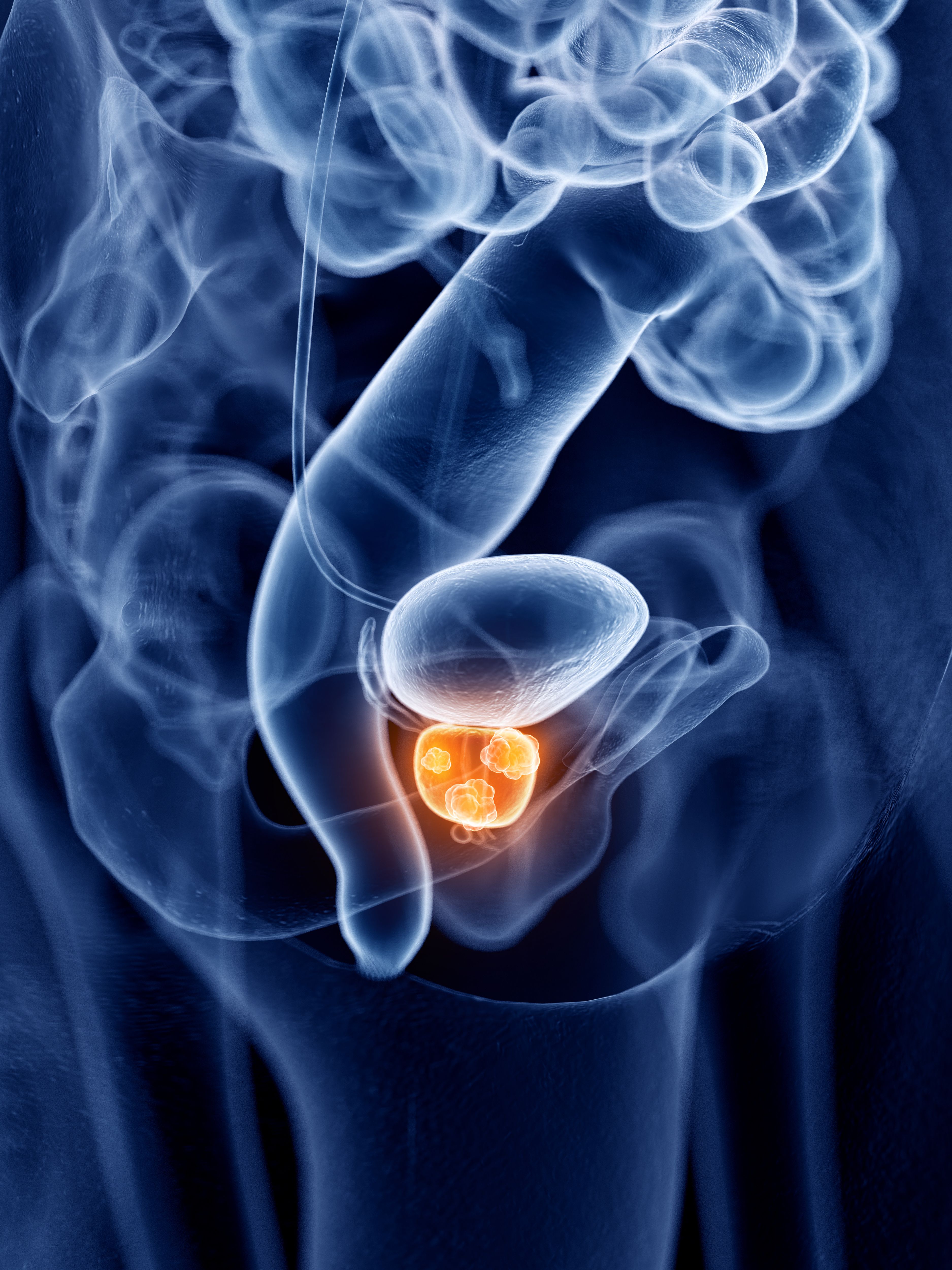EBRT Plus Focal Boost Sustains Biochemical DFS Benefit in Prostate Cancer
The 10-year biochemical DFS rate was 86% with EBRT plus focal boost vs 71% with standard EBRT in those with intermediate- and high-risk prostate cancer.
The 10-year biochemical DFS rate was 86% with EBRT plus focal boost vs 71% with standard EBRT in those with intermediate- and high-risk prostate cancer.

Ten-year outcomes from the multicenter, randomized phase 3 FLAME trial (NCT01168479) shared in the Journal of Clinical Oncology showed that external beam radiotherapy (EBRT) with a simultaneously integrated focal boost achieved a sustained benefit on biochemical disease-free survival (bDFS) in patients with intermediate- and high-risk prostate cancer.1
With a median follow-up of 106 months, the 10-year bDFS rate was 86% (95% CI, 81%-91%) in patients who received EBRT with a focal boost compared with 71% (95% CI, 65%-77%) in patients who received standard EBRT (P <.001).
Adding a focal boost to EBRT reduced the number of biochemical failures by more than 50% (adjusted HR, 0.40; 95% CI, 0.26-0.61; P <.001). The dose-response curve showed that dose and biochemical failure were strongly associated, as the biochemical failure rate was approximately 5% for dose levels above 90 Gy.
Significant differences were also observed for DFS (P <.001), local DFS (P <.01), and regional lymph node DFS (P <.01).
The 10-year DFS rate was 81% (95% CI, 76%-87%) in the focal boost arm vs 67% (95% CI, 61%-73%) in the standard EBRT arm (HR, 0.48; 95% CI, 0.33-0.69; P <.001); the 10-year local DFS rates were 95% (95% CI, 92%-98%) vs 86% (95% CI, 81%-91%), respectively; and the 10-year regional lymph node DFS rates were 94% (95% CI, 90%-97%) vs 85% (95% CI, 80%-90%).
The 10-year distant metastasis-free survival (DMFS) rates were 87% (95% CI, 83%-92%) in the focal boost arm vs 83% (95% CI, 78%-88%) in the standard EBRT arm (HR, 0.69; 95% CI, 0.43-1.10; P = .12).
Additionally, DMFS (P = .17) and overall survival (OS; P = .77) did not show a statistically significant difference between treatment in the focal boost and standard EBRT arms.
The dose-response curve for distant metastases showed that a higher D98% was associated with lower rates of distant metastatic failure.
“In conclusion, the 10-year report of the FLAME trial demonstrated the sustained benefit of focal boosting for patients with intermediate- and high-risk [prostate cancer] on their bDFS,” wrote lead study author Karolína Menne Guricová, MSc, of the Department of Radiation Oncology at the Netherlands Cancer Institute in Amsterdam, the Netherlands, and coauthors.1 “Furthermore, the dose-response curve for distant metastatic failure suggests a possible association between dose and this outcome.”
FLAME was a multicenter, randomized controlled trial that randomly assigned 571 patients with localized intermediate- and high-risk prostate cancer to either the standard EBRT arm (n = 287) or the EBRT with focal boost arm (n = 284).
Treatment in the standard arm consisted of EBRT at 77 Gy in 35 fractions to the whole gland, and treatment in the focal boost arm consisted of EBRT with a simultaneously integrated focal boost of up to 95 Gy to MRI-visible lesions.
Eligible patients for the trial had prostate cancer and were scheduled for EBRT using intensity-modulated radiotherapy and fiducial marker-based position verification.2 Exclusion criteria included having a WHO score greater than 2, an International Prostate Symptom Score greater than 20, and previous pelvic irradiation.
The key end point of this analysis was the 10-year bDFS rate. Additional analyzed outcomes included 10-year DFS, local DFS, regional lymph node DFS, DMFS, and OS.
No additional toxicity outcomes for the treatment were collected after 60 months.
Previously, in results shared in the Journal of Clinical Oncology in January 2021, it was reported that differences in late genitourinary and gastrointestinal toxicity of grade 2 or higher and grade 3 or higher were small and not statistically significant between the treatment groups.3
No statistically significant differences in health-related quality of life (HRQOL) were observed; in both groups, urinary HRQOL deteriorated 1 month after treatment and improved within 1 year.
References
- Menne Guricová K, Draulans C, Pos FJ, et al. Focal boost to the intraprostatic tumor in external beam radiotherapy for patients with localized prostate cancer: 10-year outcomes of the FLAME trial. J Clin Oncol. 2025;43(28):3065-3069. doi:10.1200/JCO-25-00274
- FLAME: investigate the benefit of a focal lesion ablative microboost in prostate cancer (FLAME). ClinicalTrials.gov. Updated June 2, 2020. Accessed October 6, 2025. https://tinyurl.com/54mckf6b
- Kerkmeijer LGW, Groen VH, Pos FJ, et al. Focal boost to the intraprostatic tumor in external beam radiotherapy for patients with localized prostate cancer: results from the FLAME randomized phase III trial. J Clin Oncol. 2021;39(7):787-796. doi:10.1200/JCO.20.02873